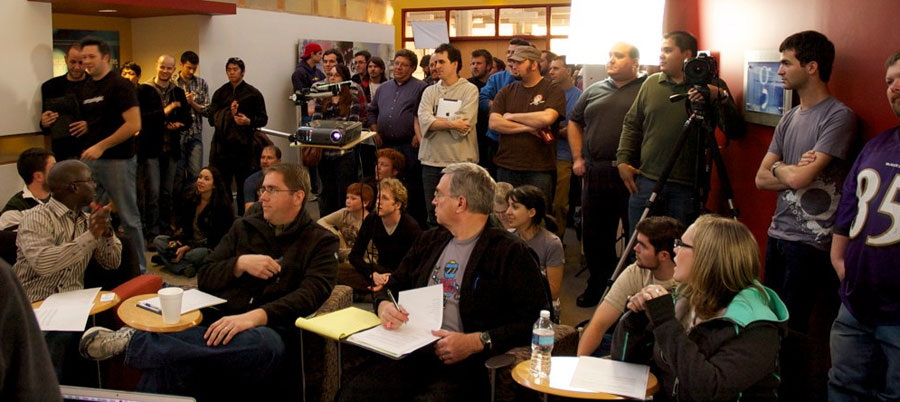The steady growth in attention since the first hackathon at the Beehive in 2010 sounds a lot like that of the Baltimore tech scene as a whole.
“The event is kind of evolving with the community,” said Chase Gilliam, one of the eight members of the event’s organizing team who works at Avhana Health by day.
According to lead organizer Paris Pittman, the event is already sold out with 125 participants, about one-third of whom are women. The 48-hour event that looks to bring the tech community together and give everyone room to make new stuff is set for Sept. 18-20 at the Digital Harbor Foundation Tech Center in Federal Hill.
The hackers will be vying for bigger prizes than in past years. Here’s a list of what’s at stake:
- Under Armour is sponsoring a $3,000 team prize and $1,000 individual prize in the wearables category.
- The Mayor’s Office of Information Technology is sponsoring a $2,000 prize in the apps category, and another $3,000 will be up for grabs.
- Stanley Black & Decker is sponsoring a $1,000 prize in the hardware category.
“Even if you’re at a hackathon, you’re using a skill that most people get paid to use, and you should get some kind of credit,” Pittman said. “That’s why this year we’ve focused on higher prizes.”
And along with sponsoring and providing judges, the companies will have representatives helping out.
As big companies grow their dev talent, they often look to hackathons for new hires. But Pittman also sees hackathons as a chance for the companies to more seamlessly weave in with the tech and startup community.
“Under Armour engineers are going to be there. Stanley Black & Decker engineers are going to be there. But not just be there, they’re going to participate,” Pittman said.
But when Friday night rolls around, it comes down to the teams and what they can create in a limited amount of time. Last year, 16-year-old Peter Collins came out of nowhere to win with an app called NodeSwipe. A team built a laminar flow fountain that also dazzled.
The Tech Center, which is a new location this year, will be open for 24 hours on Saturday, giving teams all night to work on projects ahead of Sunday’s demos. The location also provides easy access to Federal Hill establishments, and Pittman promises more than just pizza in the form of Thai, Indian and Mediterranean offerings.
Along with representatives from the sponsors, the teams will be looking to impress judges such as Dave Troy, space-tech expert Emmanuel Cephas and UX expert Catharine Robertson.
The judges will be looking at separate categories (wearables, hardware, etc.), which is a new level of organization that will help people work through their ideas more quickly.
While more seasoned hackathon participants may be able to generate ideas quickly and understand what they can finish in a weekend, first-timers often need more time. Pittman said participants can think about what resources they want to use ahead of time, they just can’t start the work itself.
“The theme is really helping guide them into that track,” Pittman said.
Before you go...
Please consider supporting Technical.ly to keep our independent journalism strong. Unlike most business-focused media outlets, we don’t have a paywall. Instead, we count on your personal and organizational support.
3 ways to support our work:- Contribute to the Journalism Fund. Charitable giving ensures our information remains free and accessible for residents to discover workforce programs and entrepreneurship pathways. This includes philanthropic grants and individual tax-deductible donations from readers like you.
- Use our Preferred Partners. Our directory of vetted providers offers high-quality recommendations for services our readers need, and each referral supports our journalism.
- Use our services. If you need entrepreneurs and tech leaders to buy your services, are seeking technologists to hire or want more professionals to know about your ecosystem, Technical.ly has the biggest and most engaged audience in the mid-Atlantic. We help companies tell their stories and answer big questions to meet and serve our community.
Join our growing Slack community
Join 5,000 tech professionals and entrepreneurs in our community Slack today!

The person charged in the UnitedHealthcare CEO shooting had a ton of tech connections

From rejection to innovation: How I built a tool to beat AI hiring algorithms at their own game

Where are the country’s most vibrant tech and startup communities?



